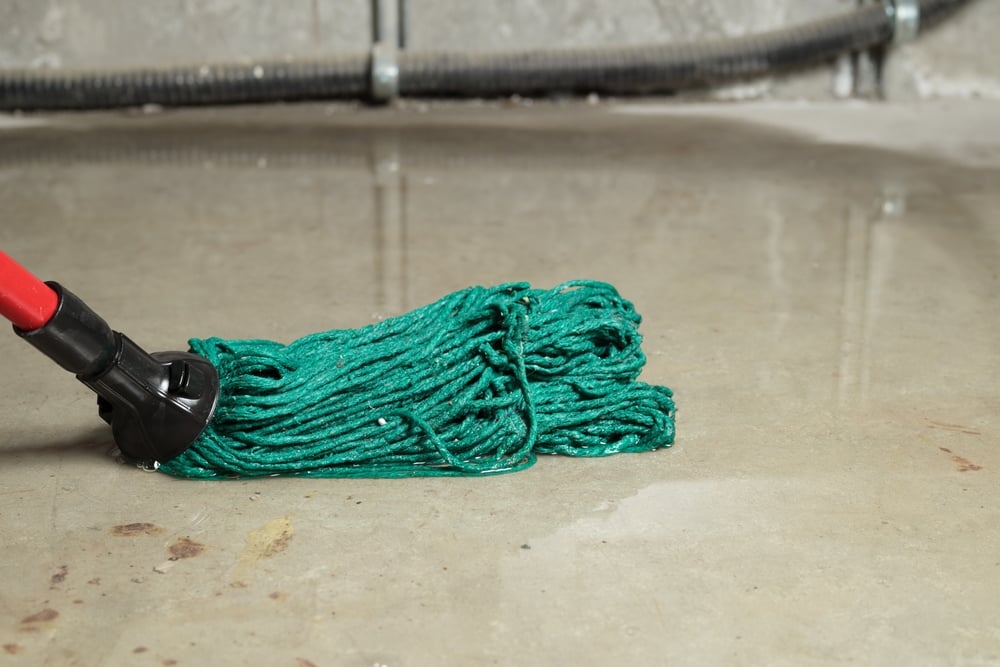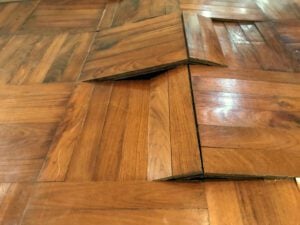Discovering water in your basement can be stressful for any homeowner. It’s a common problem caused by factors like heavy rain, poor drainage, plumbing leaks, or foundation issues.
The good news? Understanding the causes and knowing how to respond quickly can help you prevent costly problems like mold, property loss, electrical hazards, and structural damage.
At Allphase Restoration, we’re here to help. Our experts explain the common causes of basement flooding, the warning signs to watch for, and the steps you can take to keep your basement dry and your home safe.
Why Does Water Get in Your Basement?
There are several ways water can enter a basement. Identifying the source is essential to fixing the problem and keeping it from recurring.
Common causes of basement flooding include:
- Heavy Rainfall or Snowmelt – Sudden storms or rapid melting can overload drainage systems and force water into your basement.
- Cracks in Foundation Walls or Floors – Even tiny cracks can let in water over time.
- Poorly Graded Landscaping – If the ground slopes toward your foundation instead of away from it, rainwater will run straight into your basement.
- Failing or Undersized Sump Pump – A sump pump that’s broken or too small can cause water backup indoors.
- Inadequate Waterproofing – Homes without proper waterproofing are more vulnerable during heavy rains or melting snow.
- Leaky Plumbing or Burst Pipes – Internal plumbing issues can cause sudden and significant flooding inside.
Knowing what causes basement flooding is the first step to preventing it from becoming a repeat issue.
Signs You Have a Basement Water Problem
Sometimes, basement flooding shows visible signs; other times, it can be hidden and hard to notice. Spotting warning signs early helps you avoid costly repairs and protect your home.
Look out for:
- Standing water or damp floors
- Musty or moldy odors
- Water stains on the floors or the ceiling
- Efflorescence, or a white chalky residue on concrete
- Rust on appliances or structural metal support
- Peeling paint or bubbling drywall
- Increased humidity or condensation
If you notice any of these signs, contact a professional water restoration company right away to prevent severe basement water damage.
Step-by-Step Guide To Handling Water in Your Basement
Just found water in your basement? It’s important to stay calm and take action quickly.
Safety should always come first. Shut off electricity to the basement if water levels are high, and wear protective gear such as boots and gloves.
Once it’s safe, follow these steps:
Step 1 – Identify and Stop the Source of Water
The first step in handling water in your basement is to find and stop the water source. This could be shutting off the main water line if the problem is a burst pipe, repairing a leaking fixture, or directing rainwater away from your home.
If the source is unclear, stop the immediate flow as best you can and monitor conditions outside. If you are unable to locate or stop the source, call a professional immediately.
Step 2 – Protect Belongings and Remove Standing Water
Move furniture, electronics, and personal belongings to a dry area as soon as possible. Anything that’s been soaked should be assessed for damage and set aside to dry.
For water removal, a wet/dry vacuum, submersible pump, or even buckets should be used, depending on the amount of water present.
Step 3 – Dry Out the Basement Completely
Moisture left behind can cause mold within 24–48 hours. A professional restoration company will thoroughly dry out the basement using industrial fans and portable dehumidifiers.
You can also open windows to speed up drying.
Step 4 – Clean and Disinfect Surfaces
Floodwater carries dirt, bacteria, and contaminants into your basement. Even if the source was clean water, disinfecting is a must.
Scrub walls, floors, and hard surfaces with a cleaning solution to prevent mold and mildew. Carpeting or insulation that has been wet for more than 24 hours should be removed and replaced.
Step 5 – Repair and Restore Damaged Materials
Once the area is dry and clean, inspect for lasting damage. If you have any damage, a professional will help replace soaked drywall, carpet, or insulation. They can also seal any cracks in the foundation.
Consider upgrading your sump pump to prevent future flooding.

When To Call a Basement Water Damage Professional
While DIY methods might work for some minor basement water issues, specific scenarios require a professional.
You should reach out for help if you have:
- More than a few inches of standing water
- Sewage or contaminated water
- Electrical hazards
- Visible mold growth
- Repeated flooding or major structural cracks
A trained professional can quickly assess the situation, remove the water, dry out your home, and recommend long-term prevention solutions.
Ohio homeowners trust Allphase Restoration for 24/7 water damage restoration services and flooded basement cleanup.
How To Prevent Basement Water Problems
Even small amounts of water in your basement can lead to serious and costly damage. The best way to protect your home is to take proactive steps before problems start.
Here are some practical ways to keep your basement dry:
- Keep gutters and downspouts clear:
Clogged gutters can overflow and send water straight toward your foundation. Clean them regularly so water flows away from your home. - Extend downspouts 5–10 feet from the foundation:
This helps prevent water from pooling near your basement walls and seeping inside. - Ensure proper grading around your home:
The soil around your foundation should slope away from the house, not toward it, to direct water where it belongs. - Install or maintain a sump pump with a battery backup:
A working sump pump removes water efficiently, even during heavy storms or power outages. - Seal foundation cracks right away:
Small cracks can quickly get worse and let in more water. Sealing them early can save you from major repairs later. - Consider professional basement waterproofing:
A waterproofing system provides long-term protection, especially in areas prone to heavy rain or high groundwater.
These steps not only keep your basement dry but also protect your home’s foundation, structure, and indoor air quality.
Why Choose Allphase for Basement Water Cleanup & Prevention
At Allphase Restoration, we know how overwhelming basement water problems can be. Whether it’s a flooded floor, mold growth, or ongoing moisture concerns, Ohio homeowners trust us for reliable service and long-term protection.
Here’s what sets us apart:
- 24/7 Emergency Response
- Certified Restoration Experts
- Comprehensive Waterproofing and Water Removal Services
- Local Expertise
- Commitment to Customer Satisfaction
From emergency cleanup to long-term prevention, Allphase Restoration is your partner for keeping your home dry, safe, and protected.
Contact Allphase for Basement Water Removal & Waterproofing
If you notice musty odors, peeling paint, or increased humidity, don’t wait; these could be signs that your basement is at risk.
At Allphase Restoration, we offer professional inspections, waterproofing, and water removal services to quickly find and stop the source of water. Our goal is to protect your basement and home from further damage.
Call us to schedule an inspection, request a free estimate, or get immediate assistance.
Basement Water Damage FAQ
1) How much does basement water removal cost?
The cost depends on the amount of water, the source of the flooding, and the extent of the damage. Minor cleanups likely cost less than larger restoration projects. Getting a professional inspection is the best way to know your exact removal costs.
2) Can a wet basement cause health problems?
Yes. Excess moisture creates the perfect environment for mold, which can lead to respiratory problems, allergies, and other health issues.
3) How quickly can mold grow in a damp basement?
Mold can begin growing within 24–48 hours after water intrusion, making rapid drying essential.
4) Will homeowner’s insurance cover basement water damage?
Insurance coverage depends on the cause of flooding. Burst pipes are often covered, but flooding from rain or groundwater may require additional flood insurance. The best way to know if you’re covered is to review your policy or contact your insurance provider.
5) How long does it take to dry out a flooded basement?
Drying a flooded basement can take anywhere from a couple of days to over a week. It depends on how much water entered and the drying methods used.
6) What’s the best way to waterproof my basement permanently?
Professional solutions like interior or exterior drainage systems, sump pumps, and wall sealants provide long-term protection. Our basement waterproofing specialists can recommend the right approach for your home.




